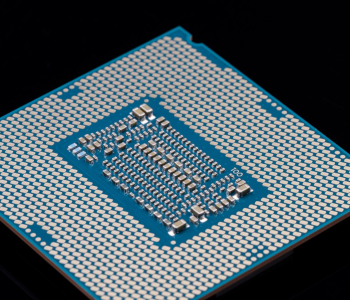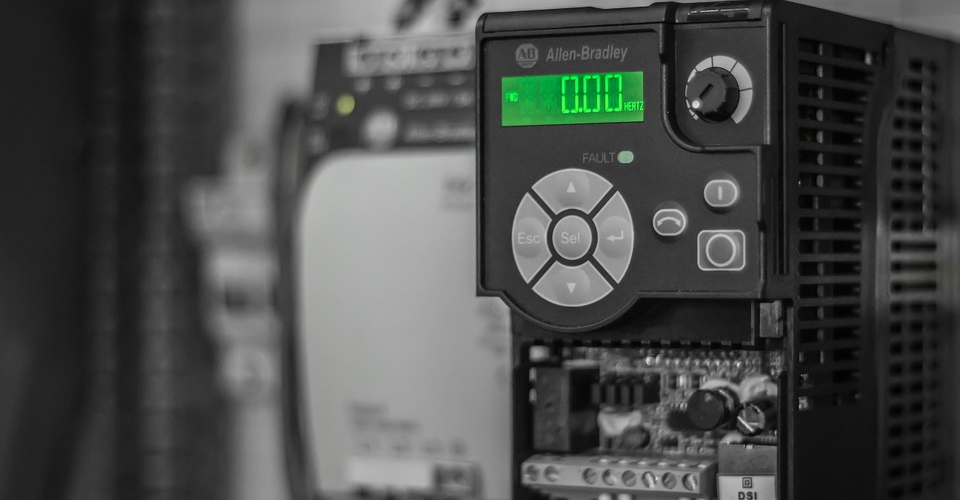What are PLC Controlled Systems? Applications, Pros and Cons
Manufacturing, at the scale at which it is done nowadays, is impossible without a healthy dose of automation. Save for a few “artisanal” methods, most manufacturing done today is heavily automated. Not only is automated manufacturing faster, but it also results in products at much more consistent standards of quality.
Many components behind different automated systems may vary, but they are invariably based on PLC technology. What exactly is PLC and why is it essential to automated systems? How are PLC controlled systems superior to other manufacturing techniques?
What is PLC?
A programmable logic controller (PLC) is basically a computer that has been specifically adapted to a manufacturing process. It is built to receive signals from process parameters and user commands, process these signals through a pre-built algorithm, and translate the output as commands to various process components. Through PLC technology, much of the decisions that need to be made during the manufacturing process no longer need to be done by human operators, reducing the need for manpower while enhancing the speed and overall precision of the process.
The origins of PLC systems can be traced to early attempts to automate industrial processes through the use of basic drum relays and electrical relay circuits. These were called ‘logic systems’ and were quite useful in executing either automated or timed process operations.
The major limitation of these logic systems is that they had to be customized for each type of automated process. Changing just one parameter in the process will warrant lots of work in rewiring the circuits in the electrical relay. Documentation of these systems and changes was also equally challenging, as these systems did not come with a built-in memory.
The most prominent brand in the early days of PLC technology was the Allen-Bradley. This technology was developed by Odo Josef Struger, a man who is considered even today as the “father of the PLC.” The Allen-Bradley brand went on to become a major manufacturer of PLC technologies and was responsible for crafting many of the standards used in PLC programming.
PLC technology is distinct from the old logic systems in that it relied on a digital computer with a built-in algorithm created using a standard programming language. The digital nature of the system made it compatible with a variety of input signals and made it much easier to make changes to the program simply by altering parts of the code. PLC systems were also made of modules, allowing for easy changes and expansion without needing to overhaul a huge portion of the system.
How does PLC technology work?
As with any computer-based system, a PLC controlled process has both hardware and software components. Understanding how each of these components work and how they contribute is key to comprehending the basic of PLC technology.
Hardware

Just as with any computer system, a PLC system comes with the usual hardware components like a CPU, power supply, memory modules, input and output options, and a human-machine interface. Each of these components plays a critical role in how the system works, and we will attempt to discuss them briefly.
The CPU of a PLC system is typically a 16 or 32-bit processor integrated circuits for data monitoring and control logic. It is responsible for accepting input signals, running the pre-programmed algorithms, and send the resulting output signals. It also does regular system diagnostics to check for any possible errors or abnormalities which may affect its normal functions.
In terms of memory, a PLC system has both read-only (ROM) and random-access (RAM). The ROM provides permanent data storage and is primarily reserved for the system’s algorithm or program. The temporary storage of the RAM is most used for the signal received from the input and output components as well as other internal devices.
Sensors and feedback mechanisms in an automated system provide most of the input signals that the CPU processes. By continuously receiving signals from these components, the CPU is able to decide on the next steps based on the system’s pre-built algorithms and logic systems. The capabilities of a system can be easily expanded by adding more input and output modules, although some modifications to the algorithm and the backplane may also be needed.
To allow for user input, PLC controlled systems typically have a good number of human-machine interfaces (HMI). These can range from simple keypads to full-color touchscreen panels. User input via this type of interface is another type of “input” for the CPU to process. An HMI also usually provides feedback to the users by displaying critical process parameters such as temperature, pressure, and the current state of specific motors or valves.
All the components of a PLC controlled system are installed physically on a backplane, which is simply a technical term for the carrier or rack. A backplane also provides a convenient interface for the components to be connected with each other. The power supply for the PLC components is typically integrated into the backplane as well. In most cases, the backplane of a PLC system is built to withstand the operating conditions of the system and has provisions for possible future expansion modules.
Software

The program or algorithm of a PLC system is its “brain” – the mechanism by which input signals are converted into actionable results. The program of a PLC system is similar to just about any computer program in that it has to be written using a standard programming language which dictates its set of rules and logic relationships.
There are several levels of programming language used in PLC systems, but the most basic of these – called “ladder logic” – is still quite common today. From its name, ladder logic uses a top-down relationship between input and output signals. For instance, a single rung of the ladder can pertain to one type of output which is determined by one or more inputs. This is a simple logical relationship that is easy to manipulate but is not very flexible.
An instruction list is just few notches more advanced than a ladder logic. The code is quite literally a list of instruction. The G-Code used in CNC lathes and mills is an example of an instruction list. While instruction list programs are easy to write, they have no concept of logic whatsoever, severely limiting their potential applications.
A structured text (ST) language is one of the most sophisticated programming languages used in PLC controlled systems. This is a very versatile programming language with built-in logic functions using the standard IF-THEN-ELSE statements. A high-order programming language is a lot more complex but provides greater room for expansion, thus making it more future-proof.
The pros and cons of PLC controlled systems
The fact that just about all modern manufacturing facilities have adopted some form of PLC technology makes it apparent that its benefits far outweigh its drawbacks. As PLC technology has evolved, it has even become more reliable and accessible at the same time. However, the technology still isn’t perfect and may not be suitable for all manufacturing settings.
PROS:
Fast and precise
Compared to a manual process, a PLC controlled process has huge benefits in terms of speed and quality control. Being fully automated, a PLC controlled process can proceed with minimal operator intervention and can typically resolve minor issues by itself. Since the process follows prescribed steps automatically, it also typically manufactures products at a much more consistent level of quality. This is very important for large-scale manufacturing processes and reduces the costs associated with production rejects.
Has room for expansion
The modular nature of PLC controlled systems makes it relatively easy to expand with additional modules. This is important for manufacturing facilities that have plans for future growth. The ease with which additional input and output modules can be installed is also reflected in how easily they are integrated into the system’s programming with discrete function blocks. Whether it’s additional sensors or motors, expanding a PLC system will not take a lot of work in the hand of a skilled programmer.
Better supervisory control
With the evolution of communications technology, PLC controlled processes have also evolved to allow for remote control. This means that operators no longer need to be physically located near the equipment they are operating. This massively speeds up the process, allows people to work in relatively safer conditions, and reduces the need for a large amount of manpower. PLC technology has given way to the concept of a control room – a single room where multiple pieces of equipment can be controlled conveniently.
CONS:
Needs a large capital investment
Although a PLC controlled system is well worth the investment, it is hardly arguable that developing such a system will require a huge capital. The cost of setting up the sensors and actuators, wiring them into the backplane, and writing an algorithm for the specific industrial application adds to the already large costs of the basic manufacturing equipment.
Often sold as proprietary technology
Since PLC systems are considered an essential part of a modern manufacturing facility, manufacturers of equipment typically offer their own proprietary PLC technologies. In most cases, this is convenient in the part of the client, as a proprietary PLC system will be seamlessly compatible with the equipment from the same manufacturer. However, this also eliminates any chance for the client to come up with their own PLC systems.
In most cases, the large capital needed to put up a PLC controlled process is easily offset by the benefits of using the technology. With the potential for faster throughput, better quality, and reduced manpower costs, a PLC controlled process will almost always be more profitable than a manually controlled counterpart.
Final thoughts
In the modern manufacturing landscape, there is simply no way for a company to thrive without embracing technology. PLC controlled systems are a good example of a technology that has proven so beneficial that it has been almost universally adopted by medium to large-scale enterprises. From desktop laser cutters to industrial conveyors, PLC technology has become an indelible part of the manufacturing industry.

